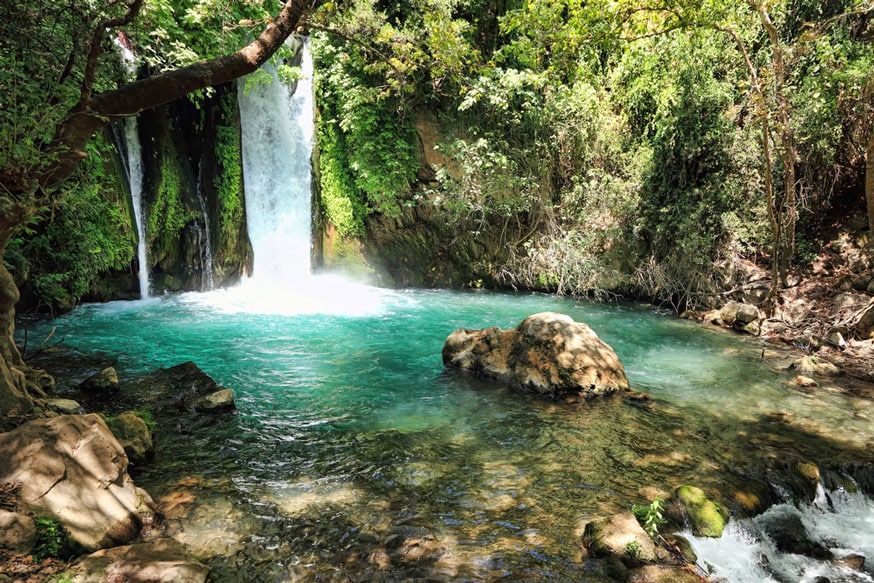Situated on a terrace overlooking a fertile valley, Caesarea Philippi is nestled in the foothills of Mount Hermon, and about 25 miles north of the Sea of Galilee.
The most notable feature of this area is a large spring — where the Jordan River comes to life. Originally, the spring emerged from a large cave, lined with a series of niches for shrines, that was carved into a large sheer rock face. A temple to Pan was built at the mouth of the cave with courtyards for rituals. Due to an earthquake in the area centuries ago, the spring now seeps from the surrounding bedrock — but the cave still remains.
This area has also undergone many identity changes over the centuries. Its earliest references, appearing in the Tanakh (Old Testament), associate the spring with the pagan gods Baal Hermon and Baal Gad. During the Hellenistic period, the Greeks dedicated the area to the Greek god Pan and named it Paneas. During the Hellenistic (Greek) period, this city swarmed with devoted worshippers of the Greek god Pan.
It was during the subsequent Roman period that King Herod the Great’s son, Phillip, founded a city in this area in honor of Caesar Augustus. The name was changed to Caesarea Paneas, then Caesarea Philippi. Today, the city is commonly referred to by its modern name, Banias.
In spite of its pagan associations and historical shifts, one of the most pivotal moments in biblical history took place in Banias.
The Bible tells us that Jesus and His disciples came to Caesarea Philippi and Jesus asked His disciples: “But who do you say that I am?” (Matthew 16:15). It is here, against the backdrop of Roman political dominance and temples to pagan gods, that Peter replied with his timeless confession of faith, “You are the Messiah, the Son of the living God.” (Matthew 16:16)
The Mount of Transfiguration
Six days following this transformational revelation — Jesus, Peter, James, and John climbed a high mountain an experienced an event we know as the Transfiguration (Matthew 17:1-9). Despite traditional claims that this event happened elsewhere (Mount Tabor or Mount Nebo), it is most likely that this dramatic supernatural vision happened on nearby Mount Hermon. Pilgrims today can make the trek to experience the remarkable journey of Jesus and his select disciples to the site believed to be where Jesus met with Moses and Elijah.
There are few areas in the world with more spiritual significance than Caesarea Philippi. Despite its storied history, the foundation of the Christian faith resonates from this remarkable place.








